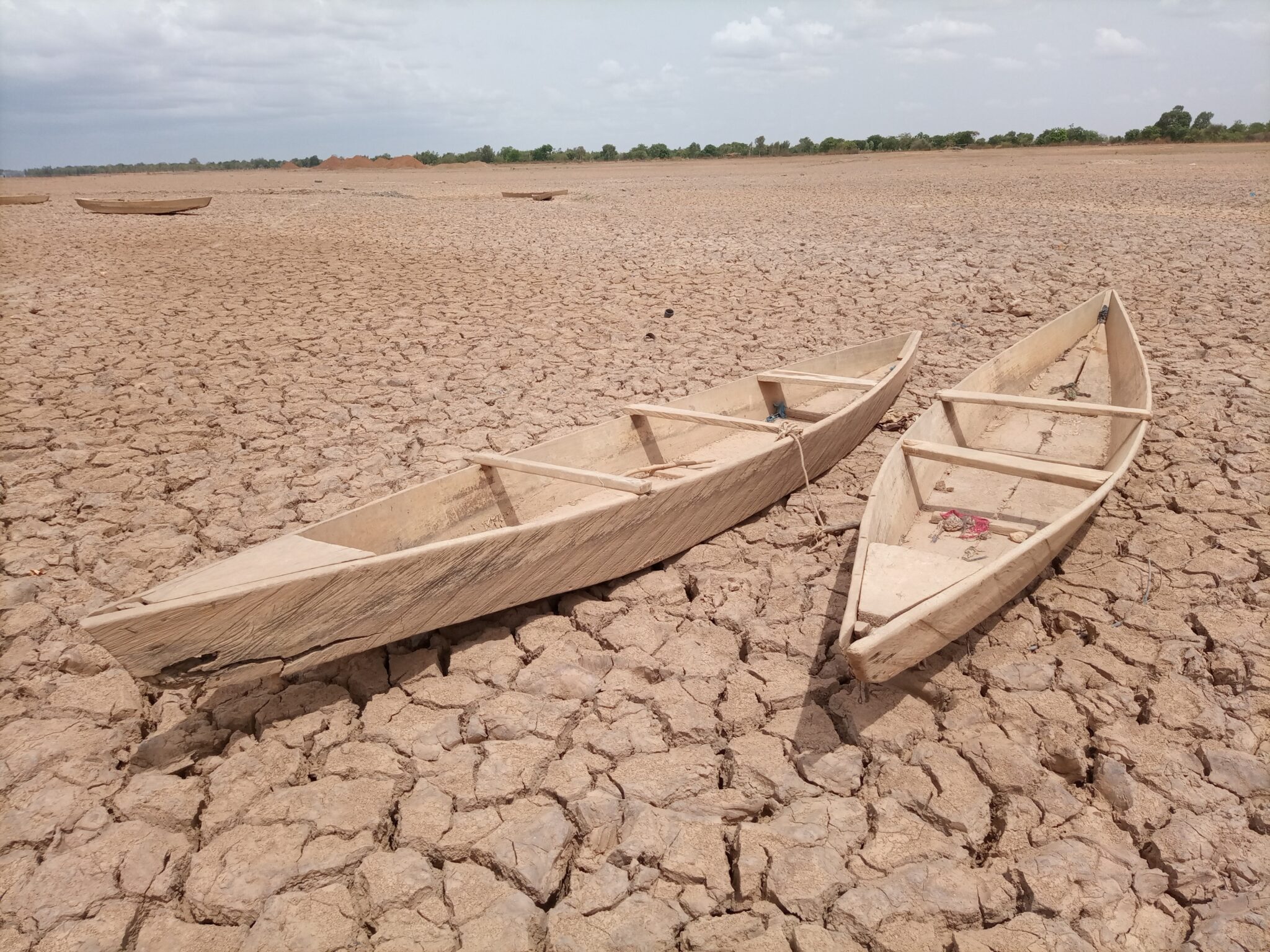With a handsome amount of economy thriving on agricultural output, Pakistan’s reliance on the availability of fresh water is a necessity. The economic survey of Pakistan states a 5.4% contribution of major crops to GDP accompanied by a 25.6% contribution of these crops in the agricultural sector of Pakistan; it employs 38.5% of its workforce. Furthermore, the accelerating rate of urbanization and population has led to a drastic increase in the demand for freshwater supplies. Irrespective of the importance and availability of freshwater resources in Pakistan, water crises remain a matter of grave emergency for Pakistan. The real question is: Is Pakistan running out of water?
The severity of the current water crisis can be analyzed from the United Nations Development Programme (UNDP) and Pakistan Council of Research in Water Resources (PCRWR) who claim that there will be an absolute water scarcity in Pakistan by 2025. A report released by the IMF (International Monetary Funds) claimed Pakistan is the third most water-stressed country worldwide. To prevent the country from hitting a deadlock, a framework of action must be drafted, highlighting the causes, effects, and effective solutions to solve the obstacle.
The first step in the framework of action is figuring out the causes for the lack of fresh water supplies in Pakistan. The web below exhibits few prime reasons that appear as root factors for water crisis.

- Increased Demand
Pakistan is the sixth-largest country in the world inhabiting over 220 million inhabitants and this graph continues to expedite. With an escalating population, the demand for freshwater rises. The current freshwater supplies are already exhausted so the provision to keep up with these demands seems impossible.
- Pollution
Pollution marks itself as one of the key candidates contributing to the scarcity of freshwater. Both point sources and non-point sources play a vital role in polluting freshwater sources. Point sources are defined as those sources that directly discharge effluent via effluent pipes originating from factories or industrial setups. These sources can be easily identified. Non-point sources include the means where rainwater washes away pesticides, insecticides, and fertilizers from agricultural fields that end up into large water bodies. These sources are difficult to mark as pollution comes from more than one definite source.
The discharge of industrial waste, dumping of household waste that makes its way into streams and rivers, the agricultural waste draining in water bodies, all contaminate the water supplies. Increased nutrients within water bodies result in eutrophication, a phenomenon where the structural changes in a defined ecosystem, such as a lake promote algal growth hence making the water unfit and harmful to be used for drinking, washing, cleaning, etc.
- Exhausted Ground water supplies
Pakistan is the third-largest country that utilizes ground water supplies for irrigated agriculture. However, waterlogging and salinity accompanied with unmonitored ground water extraction have led to damaging consequences that can potentially tire the remaining water supplies. Pumping out water quicker than it can be replenished reduces the water volume that can be stored and hence reduce fresh water access.

- Lack of efficient water infrastructure
Water infrastructure in Pakistan is dated and inefficient to store and regulate the available water. Lack of reservoirs and dams prevents the storage of excess water for future use. Moreover, the sedimentation at the beds of these water storage bodies reduces the capacity to store the required volume of water. Currently, there are two large dams in Pakistan: Tarbela Dam and Mangla Dam. However, these dams have reached their dead levels and cannot further support more influx of water. According to Muhammad Khalid Rana, Pakistan receives around 145-million-acre feet of water, but it can only store 13.7-million-acre-feet of water. More than 25 million acres of water are wasted due to the lack of dams to store surplus water.
- Climate Change
Global warming is pacing at an alarming rate which impacts the behavior of glaciers, oceans, precipitation rates, the occurrence of floods and droughts. Higher water flow results in floods and with a lack of dams, the flood water cannot be stopped or stored. Water gushes down the soil-covered land causing erosion that results in sedimentation in dams and water bodies thus reducing their water carrying capacity and making the water unfit for consumption. Moreover, the rising mean daily temperatures mean that the earth is getting warmer that causes heavy rainfalls as the entire water cycle is disrupted.
Escalating greenhouse gas emissions cause a rise in mean daily temperatures leading to rapid melting of glaciers and drying up of water bodies. Drying up of water bodies leads to droughts with adverse effects such as famine that destroy communities and societies. Being a water-stressed country, Pakistan can face serious water emergencies that can potentially affect a large mass of people. For example, increased floods or other natural water disasters can contaminate the water bodies and also support the growth of several water-borne diseases like cholera and typhoid that are a threat especially to the health of children.
- Increased Prices
The true value of water from its extraction to purification to transport is not properly calculated. This results in a lack of investment and funds for the development of infrastructure, water conservation technologies, and water transport facilities. With decreased financial input to cover the costs and non-defined high taxation on water distribution has led to a deterioration of the available resources and the management system. With over 2/3rd of Pakistan’s population residing in rural areas, such high costs are unbearable for families living on a constrained financial budget.

- Water dispute
In 1960, post-partition, Pakistan and India’s dispute over water resources was solved via Indus Water Treaty that aimed to effectively divide the water in the Indus water basin between both countries. India was given access over water present in the eastern rivers (Sutlej, Beas, Ravi) while Pakistan was to use water from western rivers (Indus, Jhelum, Chenab). However, India is accused of violating this treaty by constructing dams over rivers flowing into Pakistan via Kashmir. This has reduced the water flow in Pakistan.
To restore and replenish this driving force of nature, concrete measures must be implemented without further delay. It is mandatory to keep aside political differences and differences of opinions and work towards providing clean and ample water supply to masses within Pakistan, knowing that 90% of the usage of water is for agricultural purposes that engage a majority of the labor force.

- Improved Water Infrastructure
In order to keep up with the growing water demands, infrastructure for water management and storage must be built. Knowing that the two largest dams of Pakistan have already reached their maximum water holding capacity, more dams should be constructed along with reservoirs to store the water especially that of monsoon rainfall. This will aid in preventing the occurrence of floods in low-lying areas and prevent additional losses from floods such as erosion and sedimentation. The proposed construction of the Kalabagh dam on the Indus River is underway. However, dams have their own set of downsides that can pose much greater threats.
To overcome this, the government can strive to opt for Dam equivalents (DE) which are structural setups mimicking the purpose of large dams. They are considered a favorable alternative as they avoid the downsides that are involved in dam construction such as high costs. DE can rejuvenate the traditional canal irrigation practices.
- Educate people.
Awareness is the first step to bring forth a change. It is cardinal to educate people and raise awareness among the lot about water scarcity, the significance of clean water access, and the unfavorable outcomes if Pakistan runs out of clean water. By providing statistical data and making people realize the sensitivity of the current and future condition, if freshwater scarcity is not prevented can prove to be an effective measure.
Giving people examples from daily life such as the amount of water wasted while cleaning, washing, or cooking would enable them to analyze the grave concerns of the authorities over freshwater scarcity. Furthermore, it is pivotal to educate people that each individual can play a significant role in conserving fresh water. A stigma that prevails in our society is that a single person cannot bring a change at the expense of millions of other wasting waters. This needs to be eliminated from among us.
- Recycle wastewater!
Gallons of non-treated wastewater are discharged daily. This pollutes the clean water supplies and makes water unfit for consumption. Hence, before discharging the water, treating the wastewater to make it harmless will prove to be a fruitful practice. This action will help conserve water, increase the available water supply and help meet the water requirements.
It is a need to mark out planned water recycling schemes in an attempt to enhance freshwater availability and access. Recycled water can be used for several purposes such as irrigation of agriculture (under a set of guidelines provided by WHO), municipal water supply, environmental restoration, etc. Such practices will cut down the surplus demand for fresh water for activities mentioned above by directing the recycled wastewater to fulfill these demands.
- Water conservation technologies
A rather smart move is to use efficient water conservation technologies that cut off excess water usage and hence water wastage. Drip irrigation, Laser levelling, and sprinklers can be utilized to reduce water wastage. Drip irrigation prevents water wastage via evaporation. Similarly, sprinklers halt the excessive flow of water and ensure an adequate supply of water to crops without wasting any.

- Implementation of Laws
Laws related to water distribution and consumption must be strictly implemented and practiced. In case of violation of any clause, authorities must take legal action against the violator. Implementation of drafted laws will ensure that all people get a reasonable share of water supply as marked by the authorities and there are no illegal ways of getting access to fresh water supplies at an expense of deprivation by the lows.
- Address Pollution
Pollution is an incurable disease. It can only be prevented. Stepping into the 21st century, it is the utmost need to address and eradicate pollution which is a threat to all lives on the planet. Inappropriate waste disposal pollutes clean water supplies which is a source of many water-borne diseases, habitat for microorganisms, and a deadly dose to many birds and water living communities.
- Fair pricing
Access to clean water supplies is not only limited to access to the resource itself but the finances behind it play a vital role. Accessibility in these terms deals with fair pricing that will enable all classes within a society to be able to use clean water. Water should be a privilege enjoyed by all, not a menace.
- Ending political rivalry
By far one of the greatest and most effective solutions to existing water crises is by halting the political rivalry between India and Pakistan primarily. The division of authority over the western and eastern tributaries and construction of dams on these should be talked through by peacekeeping aside difference of opinions between both countries. The government should take steps to enable both countries to come to a common ground and solve the crises so that the local population does not have to suffer due to it.
This is the time we act as individuals and as a community to combat the existing water crises which if not resolved, can lead to severe deterioration of communities in the future.
“When the well is dry, we know the worth of water” – Benjamin Franklin.
References
- https://www.dawn.com/news/1428966
- https://www.thenews.com.pk/print/389419-water-crisis-in-pakistan-and-its-solutions
- https://link.springer.com/article/10.1007/s11356-019-04483-w
- https://www.futuredirections.org.au/publication/water-resources-in-pakistan-scarce-polluted-and-poorly-governed/
- https://www.geo.tv/latest/208118-dam-equivalents-the-solution-to-pakistans-water-crisis
- https://www.dw.com/en/water-wars-are-india-and-pakistan-heading-for-climate-change-induced-conflict/a-47203933#:~:text=The%20dispute%20over%20the%20Kashmir,hugely%20intertwined%20with%20water%20security.&text=Pakistan%20has%20accused%20India%20of,flowing%20into%20Pakistan%20from%20Kashmir.
- https://econaur.com/water-conservation-methods-using-products-that-reduce-water-use-in-buildings/ (Picture 1)
- https://www.dawn.com/news/1428966 (Picture 2)
- https://sigearth.com/liquid-gold-waste-water-recycling-systems-and-leed-certification/ (Picture 3)
- https://www.researchgate.net/figure/5R-concept-of-wastewater-management-and-recycling-reuse-and-eco-development_fig1_286164472 (Picture 4)
Also, Read: Water Scarcity: Threats to a Global “Day Zero”

Maira Masood is a BS Biosciences student at NUST, Pakistan. She aspires to be a geneticist and wants to play an active part in spreading scientific awareness through writings.

